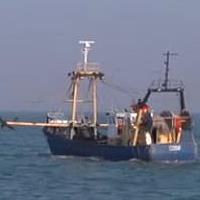(BRUSSELS) – A European Parliament committee gave its backing Wednesday to plans to tackle overfishing and offer more security to local fishermen by introducing multi-annual fishing quotas in the North Sea.
The second multi-annual fisheries plan under the new Common Fisheries Policy (CFP) would manage the fisheries of demersal species living near the bottom of the sea and accounting for 70% of catches in the North Sea (zones IIa, IIIa and IV).
A multi-annual management plan is the instrument used for managing the fish stocks in a certain area. Fishing mortality rates are an essential part of it. They provide a basis for the setting of the Total Allowable Catches (TACs) and quotas. The norm for the Common Fisheries Policy is that the exploitation restores and maintains “harvested species above levels which can produce the maximum sustainable yield (MSY)”.
North Sea demersal fishing represents over 70% of the sector in this area, involving several thousand vessels from no less than the seven bordering Member States (i.e. Belgium, Denmark, France, Germany, the Netherlands, Sweden and United Kingdom). Demersal catches were worth more than 850 million in 2012, with the highest total value of landings by species for sole, followed by plaice, Norway lobster (also called Nephrops), cod, saithe, haddock, turbot, anglerfish, whiting and lemon sole.
The management approach covers different species and is tailored to the complexity of North Sea mixed fisheries, which makes it impossible to target and catch only one species. The long-term sustainable exploitation of these stocks will guarantee the security of fishing opportunities and the livelihoods of fishermen.
The new rules would:
- set the ranges (minimum-maximum) within which the Council can set the yearly Total Allowable Catches (TACs) and quotas
- achieve maximum sustainable yield (MSY) at the latest by 2020 for all stocks affected by this regulation
- base all measures on the best available scientific advice as reviewed by the International Council of Exploration of the Sea (ICES) or the Scientific, Technical & Economic Committee for Fisheries (STEFC)
- suspend the targeted fishery for one particular stock and reduce fishing opportunities when scientific advice indicates a stock is in danger
- cover also recreational fisheries
Fisheries MEPs want an evaluation of the plan by the Commission three years after its entry into force and every five years thereafter.
The new plan also aims to set a framework for improved cooperation between the member states concerned. Countries with a direct interest will be able to submit joint recommendations no later than a year after the plan has entered into force and within a year after each evaluation of the plan. If an abrupt change in the situation of a stock occurs, then the member states concerned could again propose measures in the form of joint recommendations.
MEPs added a new article to the plan to ensure that “the stocks managed jointly with third countries and the total fishing opportunities would not exceed the ranges set in the plan” and that “future agreements with third countries would take account of the plan”.
The draft mandate-adopted by 13 votes to 4, with 7 abstentions-will now need to get the green light from the full House in September before negotiations with the Council can start.



